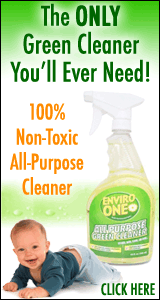Article 8: EPA Ruling on Dursban for Household Use
Kootenai Valley Times – September 15, 2000
– by Dr. Gloria Gilbere
While the EPA fell short of a total ban on chlorpyrifos, the pesticide commonly known as Dursban, the new EPA ruling takes strong action restricting most household uses of Dursban by the end of this year. This is welcome news for sufferers of multiple chemical sensitivities (MCS), as chlorppyrifos is a chemical frequently associated with the onset of MCS. In the past the EPA was only allowed to look at the carcinogenicity of a pesticide, but under the Food Quality Protection Act, which now allows the EPA to also consider neurotoxicity and estrogen disruption when evaluating the safety of a pesticide, the EPA was able to severely restrict use of Dursban. These new restrictions are the outcome of a voluntary agreement between the EPA and Dow AgroSciences. Under the agreement, production of chlorpyrifos for home, lawn and garden uses will cease by the end of the year, and its use in agriculture will be significantly curtailed. According to EPA administrator, Carol Browner, if the EPA had tried for an outright ban on Dursban, it would have resulted in years of legal battles, during which time the public would continue to be exposed.
Despite the fact that we did not get the outright ban we were hoping for, these new restrictions will protect millions of people from future exposures. The EPA ruling doesn't remove existing products from the store shelves. We as consumers should be contacting stores that sell pesticide products, requesting that they voluntarily remove any products containing chlorpyrifos from their shelves. Chlorpyrifos is one of the most widely used pesticides, and is found in over 800 products including termite treatments, bug sprays, flea products, and lawn and garden products.
The following is a list of the terms of the EPA-Dow Agreement:
- Formulation of chlorpyrifos for home, lawn and most outdoor uses will stop effective 12/1/00
- Formulator will stop sales for home and lawn use effective 2/1/01
- EPA will not order products to be pulled from store shelves
- All home use products/retail sales will be cancelled (except childproof ant traps)
- All uses in or around existing structures will be cancelled except spot termite treatments with gross visible infestations. Totally banned in 2002
- Pre-construction structural use phased-out in 5 years.
Non-residential uses:
- Uses in schools, parks, and other settings where children may be exposed will be cancelled entirely.
Outdoor areas where it was determined children will not be exposed include only the following:
- Professional applications on golf courses retained at rates reduced by 75 percent.
- Use on road medians, industrial plant sites, nonstructural wood treatments including: fence posts, utility poles, railroad ties, landscape timbers, logs, pallets, wooden containers, poles, posts, and processed wood products retained.
Indoor areas where it was determined children will not be exposed include only the following:
- Ship holds, railroad boxcars, industrial plants, manufacturing plants, and food processing plants.
Public Health Uses:
- Professional applications directly on top of fire ant mounds retained.
- Ultra low volume applications for mosquito control will be retained (evidently this was at the request of the CDC, but is normally not used).
Agriculture:
- Uses are retained; however, use on tomatoes is banned and tolerance levels on apples and grapes will be lowered significantly.
It is important that we as consumers understand how dangerous this chemical is to our children and us. Pesticides can be surprisingly persistent, both indoors and out. Pesticide and solvent vapors can persist in indoor air, soil, indoor surfaces such as carpets and dust for weeks or even years. It's been shown that pesticides in some weed-killers commonly used at schools can last from 1-5 years in the soil.
It is alarming to me that it will still be allowed on some food products, even though it has been proven to be a neurotoxin. It is still allowed on golf courses, albeit at reduced levels. A toxic product by any name is a toxic product, and safe alternatives should be used at all cost. It's no wonder we now have more allergies, asthma, attention deficit disorders, hyperactivity in children, skin disorders, learning disabilities, multiple chemical sensitivities, immune disorders and cancer. The way we can make a difference is to refuse to purchase and use products that contain known poisons, and to educate others and ourselves of the dangers and available safe options. One by one we do make a difference, Naturally.
Our gratitude to Sue Riedeman, Ecological Health Organization (ECHO) Vice-President, for allowing us to use her research for this article.
This and subsequent articles are for the purpose of education and to provide support to the millions afflicted with allergies and multiple chemical sensitivity syndromes.








